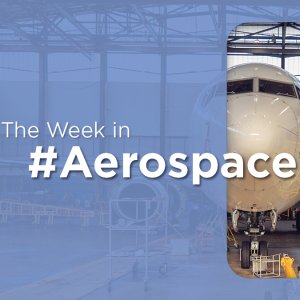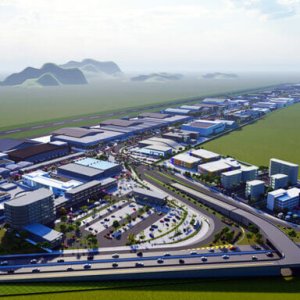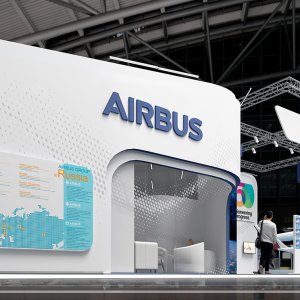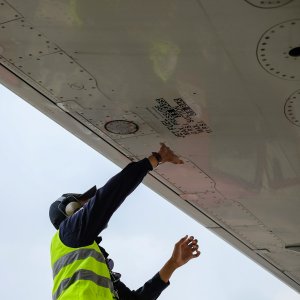
Pop the Hood
Just like a car mechanic, an MRO is essential to the function and life cycle of an aircraft. It provides all the services necessary to ensure a craft’s air-worthiness, reliability and safety in accordance with authorized specifications. Commercial airlines can provide MRO services to their own aircraft but it is also common for them to outsource that work.
Aircraft maintenance can be classified as unscheduled, which is not planned but called on when a component fails, or scheduled. This latter maintenance can itself be divided by the type of tests it requires and how often they are necessary. Transit maintenance is the most common and involves a superficial inspection of an aircraft after each stop to search for easily detected damage and deterioration. Next are type A checks, which are completed every two months or 400 to 600 flight hours and involve a more comprehensive observation and often service or replacement of damaged or corroded components. Type B revisions are performed every six to eight months and necessitate a more detailed revision than the A check. Type C checks are carried out every 20 to 24 months or 4,000 flight hours and involve a comprehensive revision of most of an aircraft’s individual parts. Finally, D maintenance is performed about every six years or 25,000 flight hours. This last revision is the most comprehensive and includes the A, B and C revisions plus a complete structural check. It may take over 20 days during which the aircraft cannot be used.
The most common services requested from an MRO are for engines, representing 40 percent of demand, followed by components, line, airframe and modifications, according to ICF International in 2015.
The market for MRO services can be attractive as these operations usually represent from 12 to 15 percent of an airline’s operating costs, according to IATA. Globally, the air transport MRO market for civil aircraft was valued at US$63.4 billion in 2015, according to ICF International, and employs 350,000 people worldwide, according to Oliver Wyman. For 2016, Oliver Wyman estimates the market will be worth US$68 billion and will continue growing at a 4 percent annual rate to represent US$100 billion by 2026.
Most of these services are clustered in North America, Asia Pacific and Europe but as the aviation industry keeps growing in other regions, new service providers will gradually enter the market, especially in emerging areas. Latin America is lagging behind with only 6 percent of the industry in 2015, valued at US$3.6 billion but that is expected to almost double by 2025 to US$6.3 billion, according to an IFC International forecast.
In Latin America, MRO growth is driven by narrow-body aircraft, such as the Airbus A320, which represents more than half of the aircraft in the region. Next is the wide body, the Boeing 777 for instance, with a fourth of the market, followed by turboprops and regional jets.
Demand for MRO services focuses on engines followed by components, line, airframe and modifications, according to IFC International. MRO demand by component is expected to retain these proportions for the next nine years.
The sector will continue to grow globally as Boeing projects a need for 38,050 new aircraft by 2034, of which 3,020 will be destined for Latin America. According to the aerospace giant, this will translate into a fleet of 43,560 aircraft globally. Of the expected new aircraft, 21,960 will be bought in direct response to growth and 16,090 will replace old airplanes. The remaining 5,510 will consist of existing aircraft retained by airlines.
In Mexico, DGAC serves as the regulatory authority but MRO service providers often receive aircraft from the US, leading them to acquire certifications as MROs from the FAA. The Mexican market for MRO services has been mostly overlooked and the country has only three large MRO centers: Mexicana MRO, TechOps and Qet Tech Aerospace and a few smaller workshops.
Inaugurated in 2014 by Aeroméxico and Delta Air Lines and representing a US$55 million investment for both airlines, TechOps’ Queretaro facilities are the largest in Latin America. The center “specializes in the Boeing 737 and 717, Embraer ERJ-145, E-170 and E-190 and the McDonnell Douglas MD- 80 and MD-90,” says Rick Uber, General Manager Base Maintenance of TechOps. The center is working only with Boeing and Embraer but is open to further collaborations.
Located next to AICM, Mexicana MRO was created to look after Mexicana’s fleet and worked independently after the airline’s bankruptcy. The center is certified by DGAC, FAA, the European Aviation Safety Agency (EASA), the US Department of Transportation (DoT) and the Civil Aeronautic Institute of Cuba (IACC). Mexicana MRO specializes in line maintenance. “In the area of major maintenance, Mexicana MRO does not have any competition at AICM,” says Marcos Rosales, Director General and CEO of Mexicana MRO Services. “Some major airlines have their own maintenance hangars but we are the primary service providers for all other airplanes that come to the airport.”
Qet Tech Aerospace operates with the vision of becoming the “go to” destination for commercial aircraft. The center is located in Sonora, a location chosen due to its advantages for MRO service providers. “Obregon is close to the US border and has an adequate climate for airplane maintenance,” says Julio Alvarez, Director General of Qet Tech Aerospace. “Furthermore, if we need a spare part it is easier to get it directly from Arizona.” The center specializes in commercial aircraft but has been shifting its focus toward small regional airlines. “Through years of experience, we have noticed that Mexico lacks infrastructure for small airplanes. Traditionally, the local aviation industry has been dominated by MROs for big commercial airlines, neglecting to service smaller airplanes,” Alvarez says.
Others are seeing the potential the MRO service market has to offer. American Industries, a shelter and real estate company, is planning the construction of an MRO in Chihuahua that would strengthen the local cluster and gain support from it to provide services to international airlines. This center is in the planning stage and being operated in collaboration with Oliver Wyman, Boeing and L-3 Crestview. “Mexico can act as a platform for the global aerospace industry through this MRO, which we plan to make available to service the entire North America region,” says Luis Lara, Chairman of the Board and CEO at American Industries.
Mexico has a growing aviation industry and most local airlines are increasing their fleets. Volaris, for instance, has ordered 30 Airbus A320neo and 44 A320, VivaAerobus 40 A320neo and Interjet 40 A320neo and 10 A321neo. Aeroméxico has an order in for 60 Boeing 777 MAX. These growing fleets will only increase the need for MRO services, making it an attractive market for investors in the coming years.





















